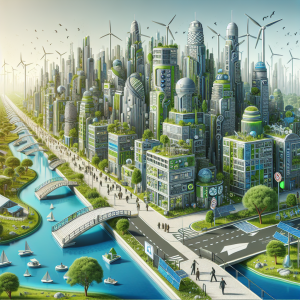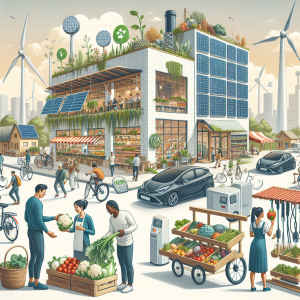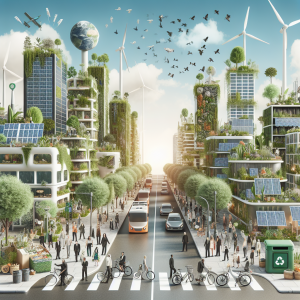

In the face of increasing environmental challenges, how can design contribute to the path of sustainability? This article focuses on sustainable design as a unique solution towards environmental protection and sustainable development.
Understanding Sustainable Design
Sustainable design, or environmental design, is a philosophy that advocates designing physical objects, the built environment, and services in compliance with the principles of economic, social, and ecological sustainability. It seeks to reduce negative impacts on the environment, and the health and comfort of building occupants, thereby improving building performance. The philosophy of sustainable design is about finding the perfect balance between high-quality design and environmental responsibility.
Inspirations for Sustainable Design

In recent years, numerous innovative projects have showcased the potential of sustainable design. For example, the award-winning architectural firm Skidmore, Owings & Merrill incorporated environmentally friendly design into their approach by harnessing the power of wind and sunlight to generate energy in their buildings. On a smaller scale, companies like Patagonia and FitBit have used eco-friendly materials in their product designs to reduce environmental impact.
Unique Solutions for Sustainability
Sustainability is not just about reducing impacts but also about coming up with innovative solutions that simultaneously benefit the economy, society, and the environment. For instance, creating objects from recycled materials not only conserves resources but also introduces a unique aesthetic value to the product. Sustainable design is therefore a driver in developing novel and creative solutions to environmental challenges.

Challenges and Future Prospects of Sustainable Design
Implementing sustainable design is not without challenges. For instance, while the adoption of green building practices can lead to a decrease in energy usage, higher initial costs and lack of awareness often hinder their adoption. However, the future is promising. With technological advancements and the growing awareness among consumers and officials, more and more businesses are incorporating sustainable practices into their operations.
Conclusion
The importance of sustainable design cannot be understated. As designers, we have a significant role in shaping the world and the future. Therefore, incorporating sustainable practices into our work ensures we contribute positively to the health and well-being of our planet and future generations. It’s more than just a trend or a philosophy – it’s a responsibility.
In essence, sustainable design should be at the heart of what we do as designers. It’s about more than just creating aesthetically pleasing designs. It’s about taking a step back and considering how our designs affect the world around us. It’s about creating design with purpose, passion, and an awareness of our planet’s sustainability.







